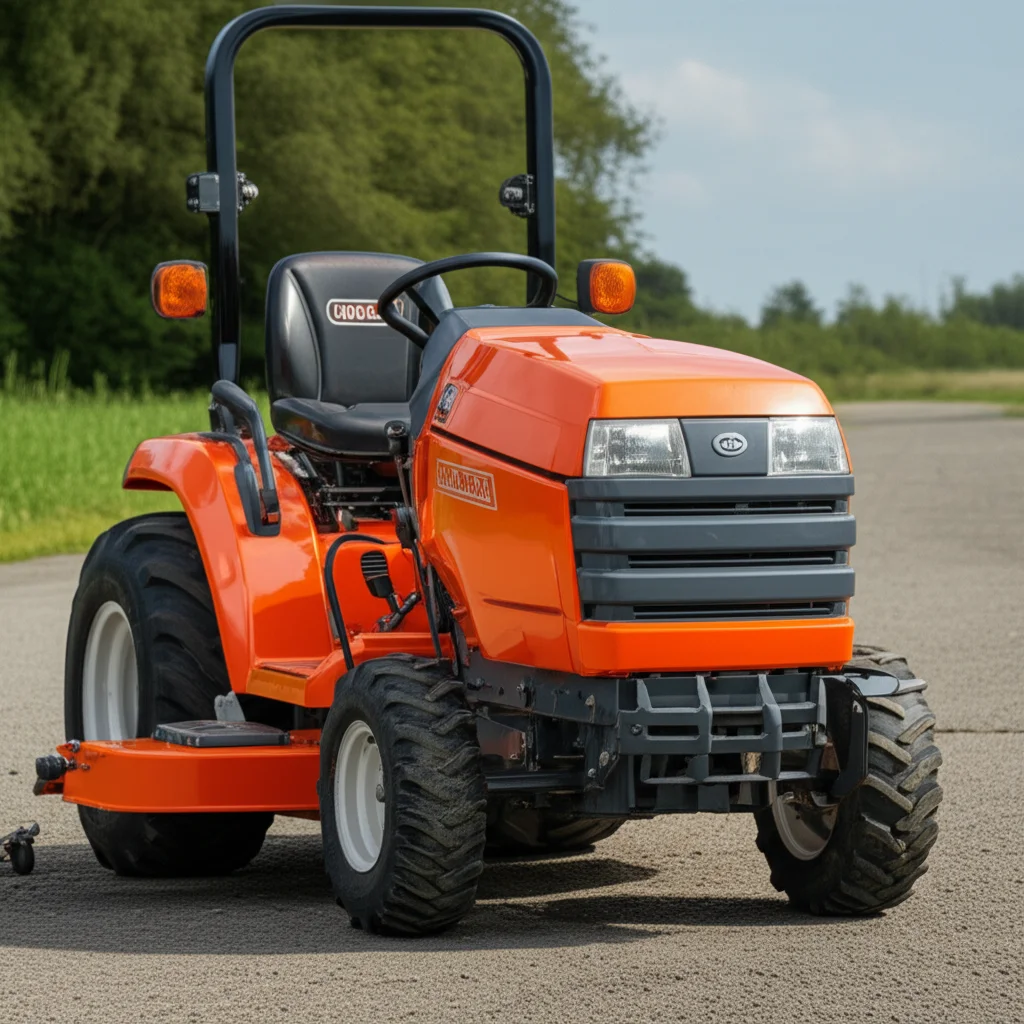· Lawn Mower Maintenance · 5 min read
How To Disengage Hydrostatic Transmission Kubota

Disengaging Your Kubota Hydrostatic Transmission: A Step-by-Step Guide
Have you ever needed to move your Kubota tractor without engine power, perhaps for towing or detailed maintenance? Disengaging the hydrostatic transmission is key. This allows the wheels to turn freely, making these tasks much easier and safer. This article will walk you through the process of disengaging your Kubota’s hydrostatic transmission, ensuring you can handle these situations with confidence. We’ll cover everything from locating the disengage lever to safety precautions and troubleshooting.
Takeaway:
- Locate the hydrostatic transmission disengage lever (usually near the operator station).
- Ensure the tractor is on a level surface and the parking brake is engaged.
- Follow the specific instructions for your Kubota model, as procedures can vary.
- Always disengage the transmission before towing or performing certain maintenance tasks.
Quick Answer:
To disengage a Kubota hydrostatic transmission, locate the disengage lever, typically near the operator’s station. With the parking brake firmly engaged and the engine off, move the lever to the disengage position. This frees the wheels for towing or maintenance.
Understanding Your Kubota Hydrostatic Transmission
Before diving into the disengagement process, let’s quickly understand what a hydrostatic transmission does. It uses hydraulic fluid to transmit power from the engine to the wheels, providing smooth and variable speed control. This system is incredibly efficient, but sometimes you need to bypass it. Disengaging the transmission essentially disconnects the engine from the wheels, allowing them to rotate independently. This is crucial for tasks like washing the tractor or moving it a short distance without the engine running. Understanding this basic function will help you appreciate why disengagement is necessary.
Locating the Disengage Lever on Your Kubota
The first step is finding the disengage lever. It’s usually located near the operator’s station, often on the right-hand side. The lever itself is typically brightly colored – often red or yellow – for easy identification. Consult your Kubota operator’s manual if you’re having trouble locating it; the manual will have a diagram specific to your model. Different Kubota models may have slightly different lever placements, so relying on the manual is always the best practice. Knowing exactly where the lever is before you start saves time and frustration.
Step-by-Step: How to Disengage the Transmission
Now, let’s get to the actual disengagement process. Follow these steps carefully:
- Park on a Level Surface: Ensure your Kubota tractor is parked on a flat, level surface. This prevents unexpected rolling.
- Engage the Parking Brake: Firmly apply the parking brake. This is a critical safety step.
- Turn Off the Engine: Switch off the engine and remove the key.
- Locate and Move the Lever: Find the hydrostatic transmission disengage lever. Push or pull the lever into the disengage position. You should feel a distinct click or movement.
- Verify Disengagement: Try to manually rotate the wheels. They should now turn freely without resistance. If they don’t, double-check the lever position and consult your operator’s manual.
This process is generally consistent across many Kubota models, but always refer to your specific manual for any variations. If you’re unsure about any step, it’s better to be safe and consult the manual or a qualified mechanic.
Safety Precautions When Disengaging
Safety should always be your top priority. Here are some important precautions to keep in mind:
- Never disengage the transmission on a slope. The tractor could roll away.
- Always engage the parking brake before disengaging. This provides an extra layer of security.
- Never attempt to disengage the transmission while the engine is running. This could cause damage to the transmission.
- Keep bystanders clear of the tractor during the disengagement process.
- If you are unsure about any step, consult your operator’s manual or a qualified mechanic.
Following these safety guidelines will help prevent accidents and ensure a smooth disengagement process. Remember, a little caution can go a long way.
Troubleshooting Common Disengagement Issues
Sometimes, the disengage lever might not move smoothly, or the wheels might not turn freely even after disengagement. Here are a few common issues and how to address them:
- Stiff Lever: If the lever is stiff, it could be due to corrosion or lack of lubrication. Try applying a penetrating oil and working the lever back and forth.
- Wheels Still Resist Rotation: This could indicate a problem with the transmission itself. Check the transmission fluid level and condition. Low or contaminated fluid can cause issues. You might need to consult a mechanic. For more information on transmission issues, see this article on hydrostatic lawn mower transmission problems troubleshooting guide.
- Lever Won’t Move: If the lever won’t move at all, there may be a mechanical obstruction. Do not force it. Consult a qualified mechanic.
Addressing these issues promptly can prevent further damage and keep your Kubota running smoothly. Regular maintenance, including checking and changing the transmission fluid, can help prevent many of these problems.
Why You Might Need to Disengage Your Transmission
Beyond towing and maintenance, there are several situations where disengaging your Kubota’s hydrostatic transmission is beneficial. For example, if you need to wash the tractor thoroughly, disengaging the transmission allows you to easily rotate the wheels and access all areas. It’s also helpful when performing repairs on the wheels or tires. Furthermore, if you need to move the tractor a short distance in a confined space without using the engine, disengagement provides a convenient solution. Understanding these applications highlights the versatility of this feature. If you’re experiencing issues with a similar transmission on a Craftsman mower, you might find this guide helpful: how to easily disengage hydrostatic transmission on your craftsman mower 2.
Conclusion
Disengaging the hydrostatic transmission on your Kubota tractor is a straightforward process when you know what to do. Remember to prioritize safety, consult your operator’s manual, and follow the steps outlined in this guide. By understanding how to properly disengage your transmission, you’ll be able to handle maintenance, towing, and other tasks with ease and confidence. Regularly checking your transmission fluid and addressing any issues promptly will ensure your Kubota continues to perform reliably for years to come. If you’re facing issues with a different brand, like a Cub Cadet, you might find this article useful: how to disengage hydrostatic transmission cub cadet unlock the power of smooth operation.
- Kubota hydrostatic transmission
- hydrostatic transmission disengage
- Kubota tractor maintenance
- lawn mower transmission

